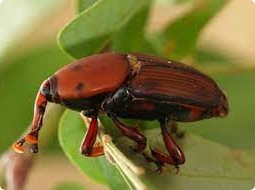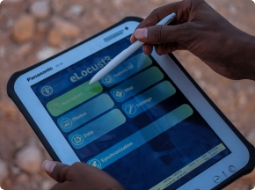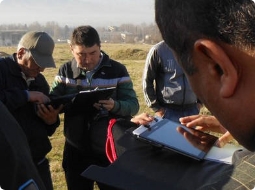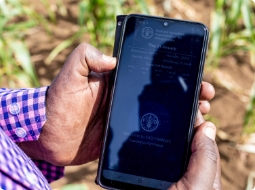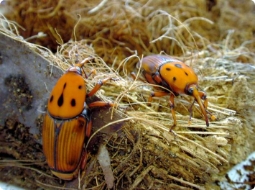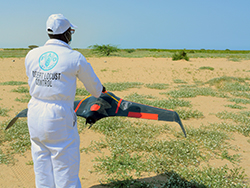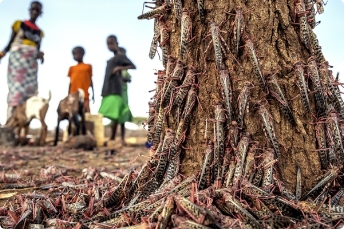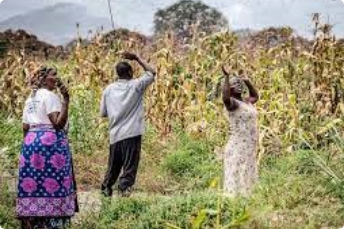Transboundary plant pests and diseases (TPPDs) are migratory pests that pose a significant threat to food security, trade, and livelihoods of people in the affected countries, and generate huge losses of crops and pastures. Preventive measures, early action, and long-term solutions are essential for protecting crops and pastures from TPPDs.
FAO's Transboundary Plant Pests and Diseases team (NSPMD) constantly monitors and provides early warning and support to manage and curb the spread of TPPDs while promoting cooperation between countries. We advise member states on the best course of action to manage TPPDs for preventing and controlling their spread.
FAO and Transboundary Plant Pests and Diseases
FAO promotes sustainable and ecological approaches to prevent and control the potential impact of TPPDs through continuous monitoring, early warning, and the promotion of innovative and environmentally friendly preventive control strategies that are sustainable.
Monitoring and Early Warning
The development and continuous innovation of surveillance and monitoring systems have allowed FAO and countries to improve data collection, early warning, and management of Transboundary Plant Pests and Diseases (TPPDs). These systems consist of data collection tools, satellite imagery, weather predictions, models, geographic information systems and drones for monitoring locusts. These technologies have allowed FAO to produce tailor-made systems and applications to help manage TPPS.
The combined usage and analysis of field data, satellite imagery and models allows FAO to predict the spread of pests and diseases and identify the best course of action.
FAO's Desert Locust Information Service (DLIS)
NSPMD operates a centralised Desert Locust Information Service (DLIS) that monitors the Desert Locust situation worldwide daily. DLIS continuously analyses weather and environmental conditions to assess locust development, breeding and migration, taking advantage of nearly 100 years of historical data and the latest innovative technologies to provide accurate and timely situation updates, forecasts and warnings. DLIS, initially established in the 1930s in the UK and later transferred to FAO, has been producing forecasts and alerts as well as more than 500 monthly Desert Locust bulletins since the late 1970s.
Desert Locust Capacity Building
Three FAO Desert Locust regional commissions have been providing continuous support to 30 Desert Locust affected countries since the early 1960s. NSPMD coordinates and supports the work of these commissions: the FAO Commission for Controlling the Desert Locust in the Western Region (CLCPRO), Central Region (CRC) and South-West Asia (SWAC). NSPMD staff members are Executive Secretaries of the Commissions. The Commissions are responsible for strengthening member countries’ national capacities in locust early warning and preventive control strategies, including survey, control, reporting, training, contingency planning, and human/environmental safety standards.
NSPMD acts as the secretariat of the Desert Locust Control Committee (DLCC), first established in 1955, as the primary forum to bring together locust-affected countries, donors, and other agencies to discuss Desert Locust management. The DLCC defines global Desert Locust prevention strategies and approaches that are implemented at regional and national levels.
Contact:

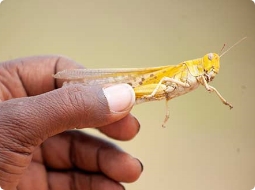
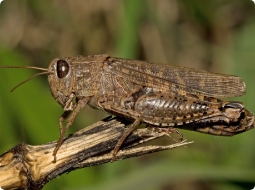
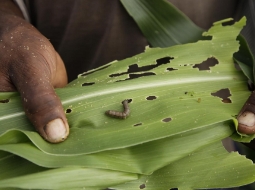
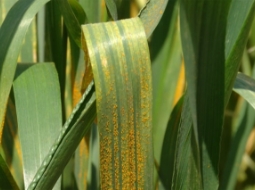
.jpg?sfvrsn=3506261e_13)
